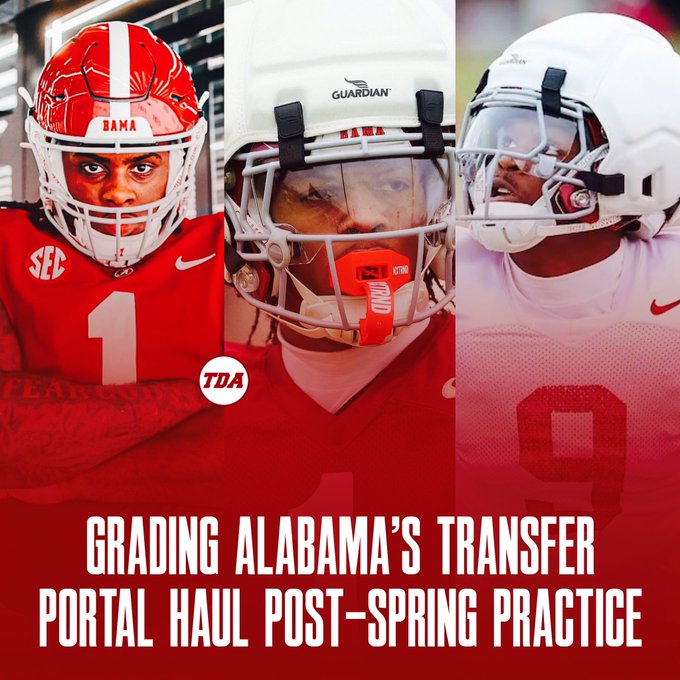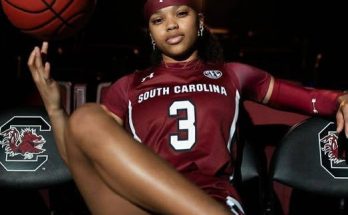Alabama’s football program has long been a benchmark for excellence in college football, and while a new era under Kalen DeBoer officially began this spring, the program’s expectations have remained sky-high. Spring practices gave fans and coaches alike an early glimpse at what the Crimson Tide will look like in 2025, and now that the post-spring transfer portal window has closed, the picture is starting to come into clearer focus. For Alabama, evaluating the transfer portal haul after spring ball isn’t just about tallying up blue-chip talent—it’s about assessing whether the program effectively addressed roster needs, maintained a championship standard, and bolstered the areas of concern that emerged during spring evaluations.
The transition from the Nick Saban era to the DeBoer regime brought plenty of questions, particularly regarding roster continuity and coaching philosophies. Spring practice was the first major test of DeBoer’s ability to evaluate inherited talent and assess the areas where outside help was necessary. While Alabama did lose some key contributors—an expected part of any coaching change—the program also made strategic additions, many of which seem tailored not only to DeBoer’s system but also to ensuring the Tide can remain contenders in the new-look SEC and College Football Playoff format.
Perhaps the most critical area of need following spring practice was the defensive backfield. Alabama saw several experienced defensive backs depart, either via graduation, early NFL declaration, or transfer. The addition of former USC safety Calen Bullock may turn out to be one of the most significant acquisitions of the entire transfer cycle. Bullock brings range, leadership, and high-level experience from the Pac-12, and he fits well into what DeBoer and defensive coordinator Kane Wommack are trying to establish—versatile, intelligent, aggressive play in the back end of the defense. His presence could allow Alabama to get more creative with its coverage packages and nickel alignments, especially against the pass-heavy offenses it will face.
At cornerback, Alabama also sought reinforcements, adding former UAB standout Maclin White, a physical boundary defender with a nose for the ball and the temperament to thrive in the SEC. While White might not carry the recruiting star power of some of Alabama’s past corners, his physicality and veteran experience fill a tangible need. White’s gritty, no-nonsense style of play stood out in Conference USA, and Alabama is betting that it will translate just as well in the country’s premier football conference.
Another notable portal acquisition came at linebacker, where Alabama added former Washington standout Ralen Goforth, who reunites with DeBoer and brings a strong understanding of the defensive concepts the staff is implementing. Goforth isn’t a flashy addition, but his familiarity with the coaching staff, high football IQ, and ability to quarterback the defense make him an invaluable asset. Alabama’s linebacker room remains one of its most talented, but also one of its youngest. Adding a veteran like Goforth provides a stabilizing influence for emerging stars such as Jihaad Campbell and Kendrick Blackshire.
On the offensive side, Alabama made waves by landing former Oregon State quarterback Ben Gulbranson. While returning starter Jalen Milroe has a firm grip on the top job following a strong spring showing, Gulbranson offers quality depth and veteran insurance. Given the physical nature of the SEC and the new era of quarterback mobility in college football, having a seasoned backup capable of running the offense is a prudent move. Gulbranson also brings valuable perspective and leadership to a quarterback room still adjusting to a new system under offensive coordinator Nick Sheridan.
Arguably, one of the most impressive post-spring additions came on the offensive line, where Alabama landed former Michigan State tackle Geno VanDeMark. With the Tide losing key pieces along the offensive front and still ironing out the best combination of starters, VanDeMark gives Alabama a plug-and-play option who can compete for a starting role immediately. He has experience at both guard and tackle and is known for his aggressive run-blocking and physical approach—traits that align perfectly with Alabama’s desire to establish control at the line of scrimmage. Given the emphasis DeBoer has placed on a balanced, versatile offense, VanDeMark’s addition may go a long way toward shoring up the line and improving consistency in both pass protection and run support.
Speaking of balance, Alabama also took steps to reload at the skill positions. While the wide receiver room is full of promise—led by talents like Kobe Prentice, Isaiah Bond, and breakout spring performer Jaren Hamilton—the Tide still added former Indiana wideout E.J. Williams to the mix. Williams, a former Clemson Tiger who transferred to Indiana before landing in Tuscaloosa, is a big-bodied receiver with SEC experience and a high ceiling. Injuries and inconsistency have hindered his development so far, but the hope is that a fresh start with a more dynamic offensive scheme can unlock his potential. If Williams can stay healthy, he could emerge as a valuable red-zone target and contested-catch weapon, offering something a bit different from Alabama’s current speed-centric receivers.
In the backfield, the Tide didn’t need to add much thanks to the emergence of Jam Miller, Justice Haynes, and Richard Young. However, Alabama quietly brought in depth in the form of former three-star all-purpose back Deondrick Rucker from Southern Miss. While he may not see immediate snaps barring injury, his versatility and pass-catching ability out of the backfield make him a valuable asset for a system that relies on motion, spacing, and misdirection.
Perhaps the most telling aspect of Alabama’s post-spring portal work is how methodical and targeted it was. Rather than swinging for splashy headlines, DeBoer and his staff evaluated where they needed production and experience, then went out and got exactly that. Every addition seems to fit a purpose, and the result is a roster that feels more complete heading into summer workouts and fall camp.
That’s not to say Alabama’s roster is without question marks. The defensive line remains an area where fans are eager to see who will step up. The Tide did not make a major post-spring addition to the defensive front, instead showing faith in its existing depth—names like Tim Keenan III, Damon Payne, and 5-star freshman Zion Grady. If that group can generate consistent pressure and hold up against physical offensive lines, Alabama should be just fine. But it’s a calculated risk not to bring in additional help, especially in the interior where injuries can pile up quickly.
Special teams also weren’t significantly addressed in the portal, which speaks to confidence in players like kicker Will Reichard and punter James Burnip, who both return. Stability in that phase of the game could be an underrated edge for Alabama in close contests.
Overall, Alabama’s post-spring transfer haul should be viewed as a success. It wasn’t the most aggressive spree in the nation, but it didn’t need to be. Instead of overhauling the roster, the Tide made chess moves—adding experience and leadership where needed, reinforcing key positions, and enhancing the team’s ability to transition smoothly into DeBoer’s vision. The additions of Bullock, Goforth, VanDeMark, and Gulbranson, in particular, reflect a commitment to building from the inside out and ensuring Alabama doesn’t lose its competitive edge amid transition.
As college football continues to evolve, the programs that thrive are the ones that can balance the chaos of the transfer portal with the cohesion of development and system fit. Alabama’s work this spring suggests that DeBoer and his staff understand that equation. While it will ultimately be judged on wins and losses in the fall, the process Alabama followed this offseason reveals a thoughtful, measured approach to team-building.
For Alabama fans, that’s an encouraging sign. The portal wasn’t used as a crutch—it was used as a scalpel, precisely targeting what was needed to compete in 2025 and beyond. It’s not easy following in the footsteps of Nick Saban, but DeBoer’s early decisions are laying the foundation for sustained excellence, not just short-term survival. And in Tuscaloosa, where expectations remain national-title high, that’s exactly what the Crimson Tide need.



